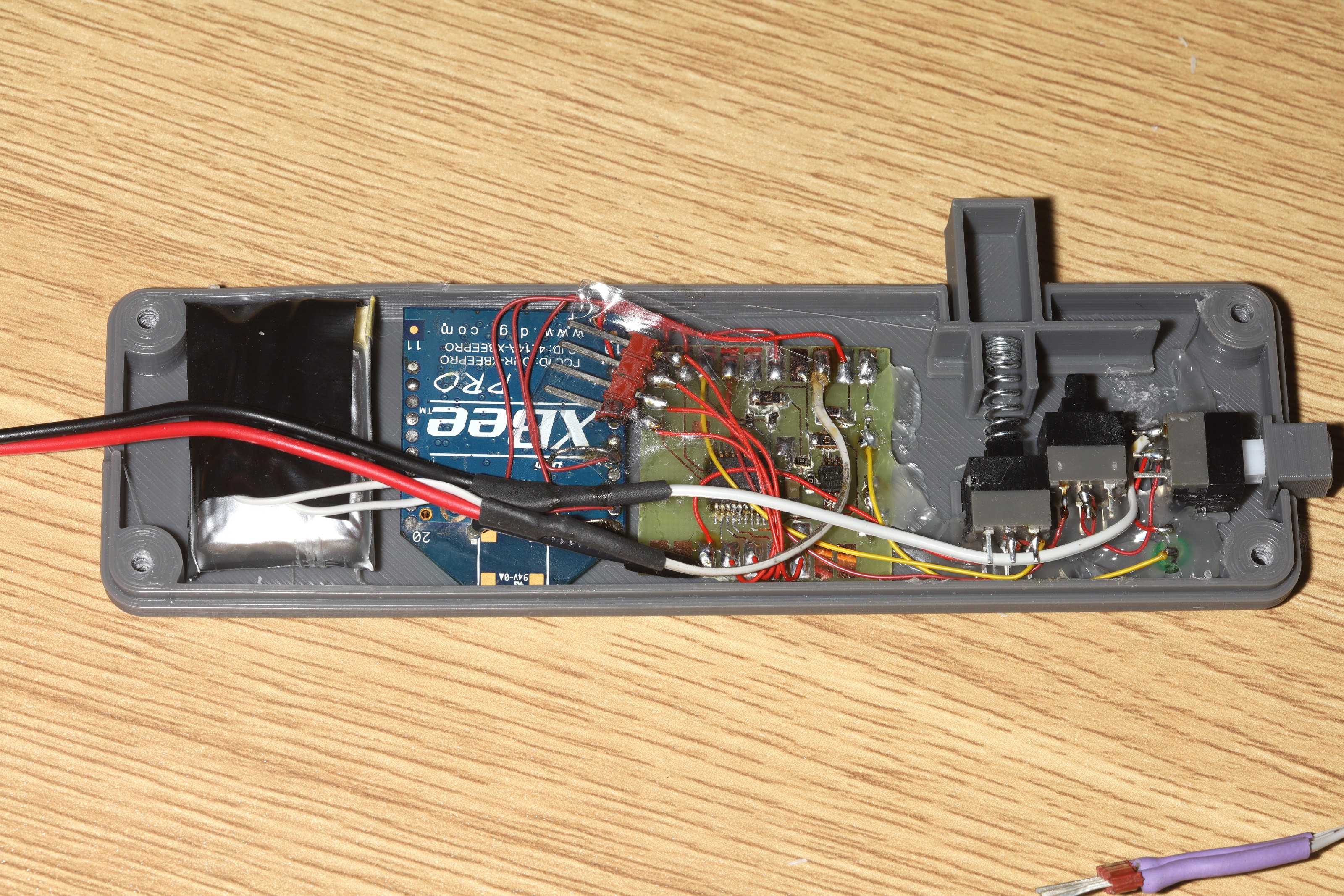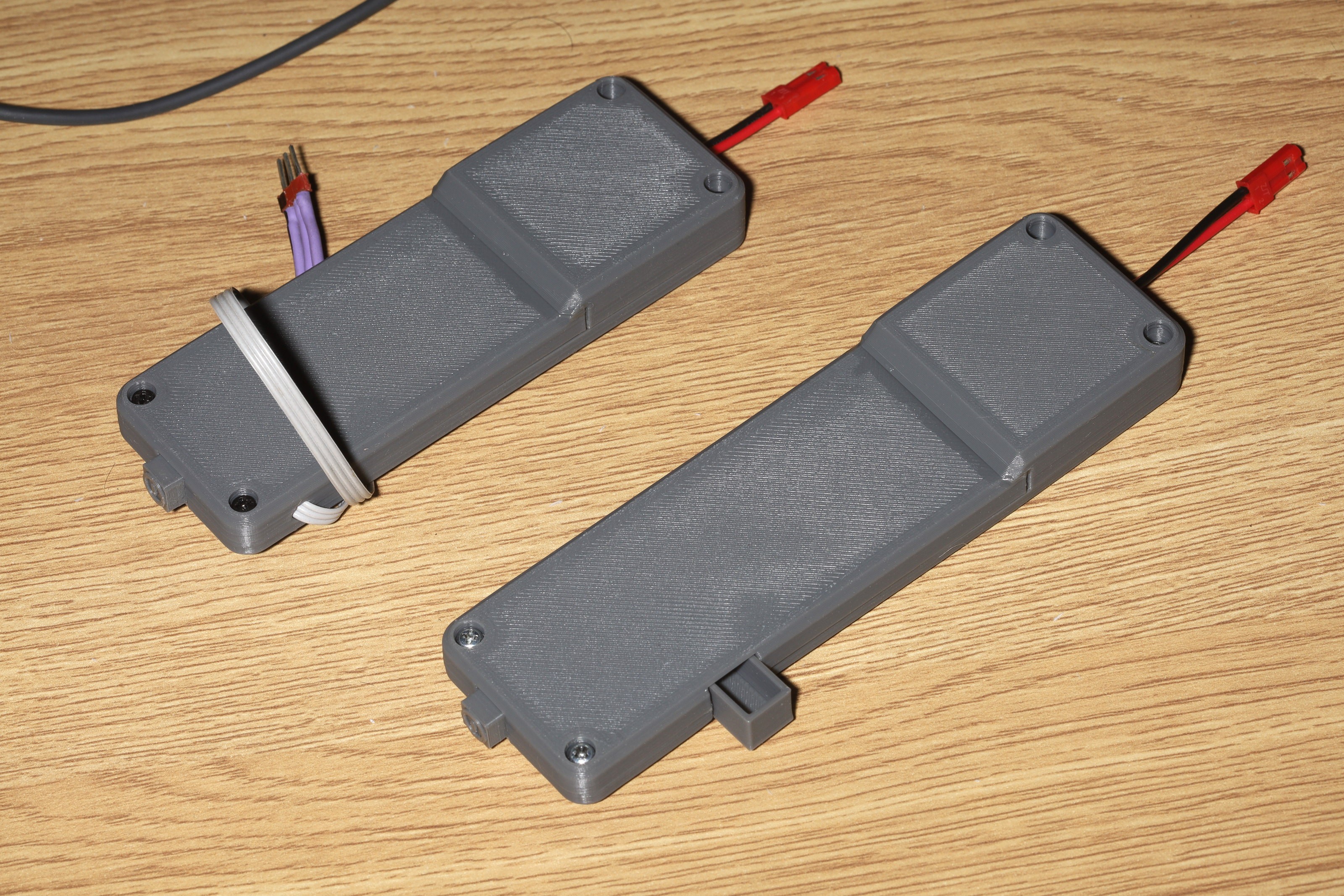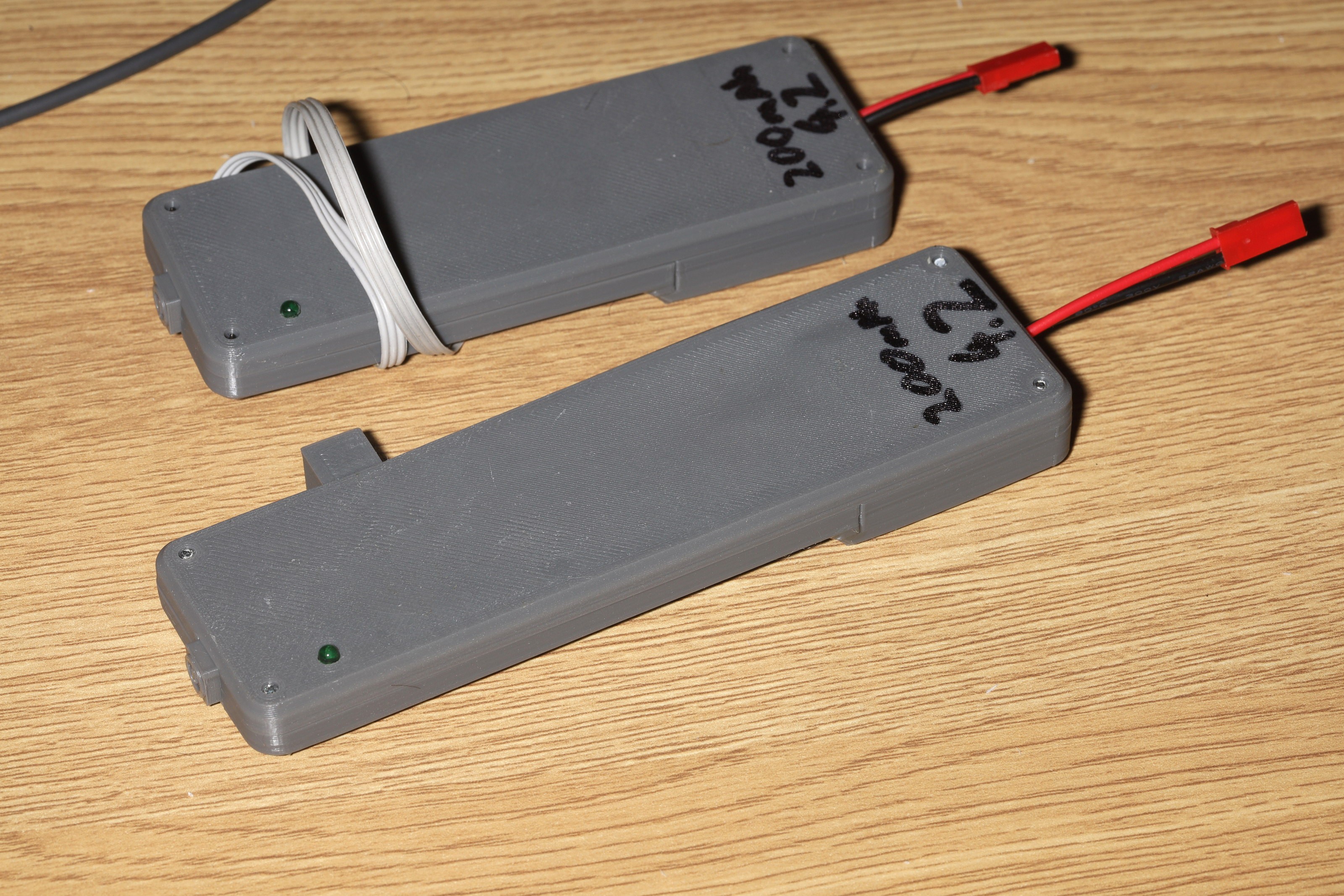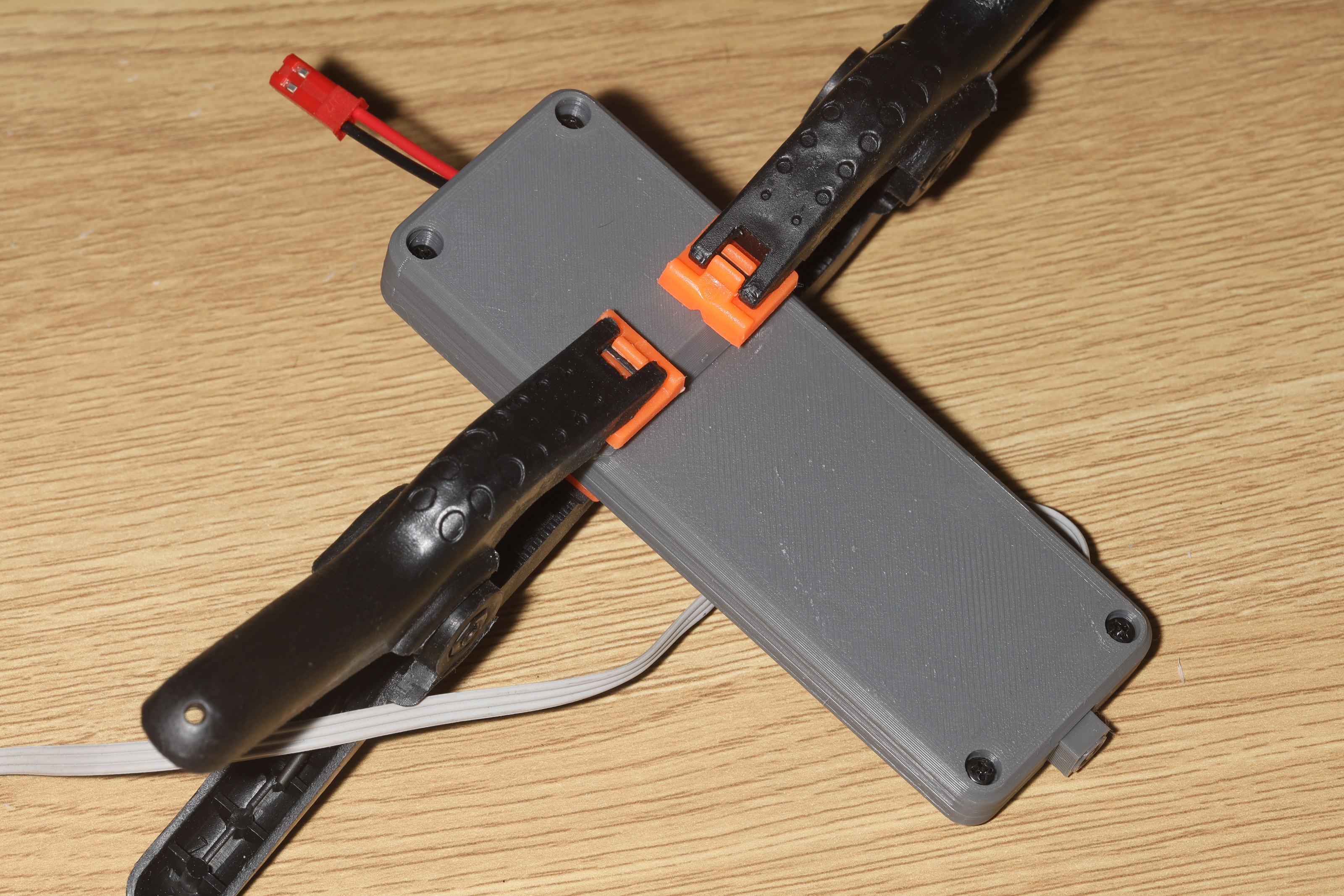The decision was made to upgrade the radio batteries to 260mAh marked, but more realistically 200. Also, the protocol got updated to transmit only when necessary instead of constantly. It's quite a step up in complexity that wasn't worth it in the tupperware days, but is worth it when the enclosure can be optimized.

The enclosure had to gain a battery bulge.



Those bulging panels have to be printed in 2 parts & glued. Unfortunately, PLA can't be heated when it's clamped or it's completely destroyed. The transmitter now has some warping despite just being in direct sunlight on a cool day. In typical lion fashion, it uses the least possible amount of PLA so it's definitely on the ragged edge of failure.
The enclosure could be a lot smaller just by using chip radios & more purpose built batteries, but it wasn't worth it.
In lieu of losing even more source code for the remote shutters, the lion kingdom finally put all its camera shutter projects on the hub.
 lion mclionhead
lion mclionhead
Discussions
Become a Hackaday.io Member
Create an account to leave a comment. Already have an account? Log In.